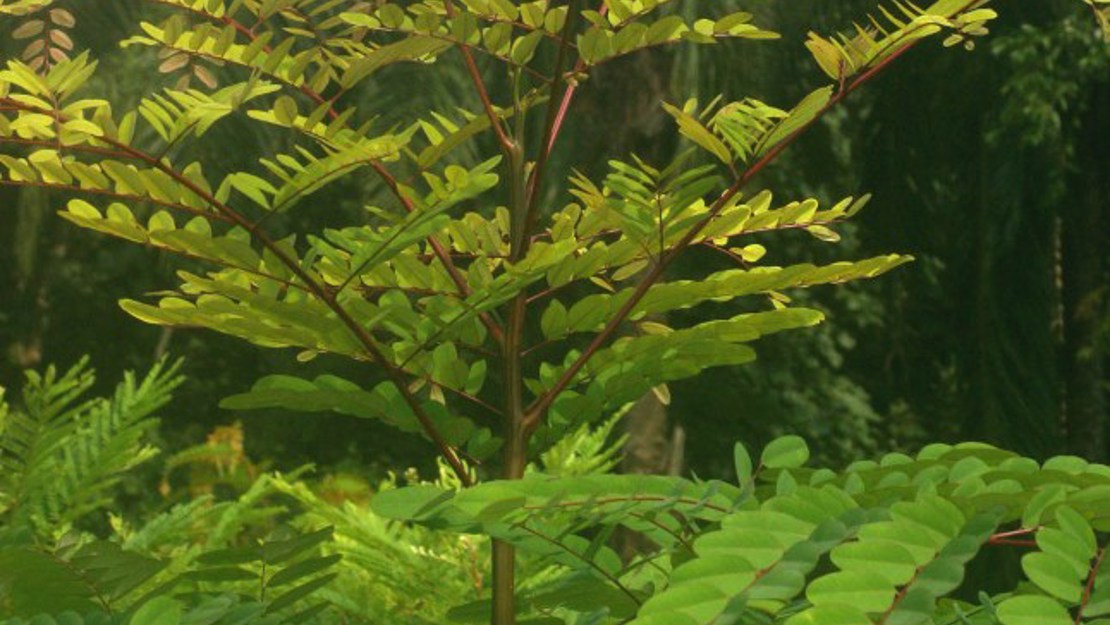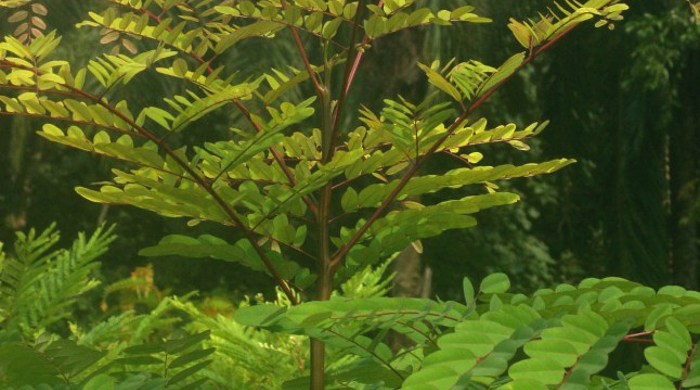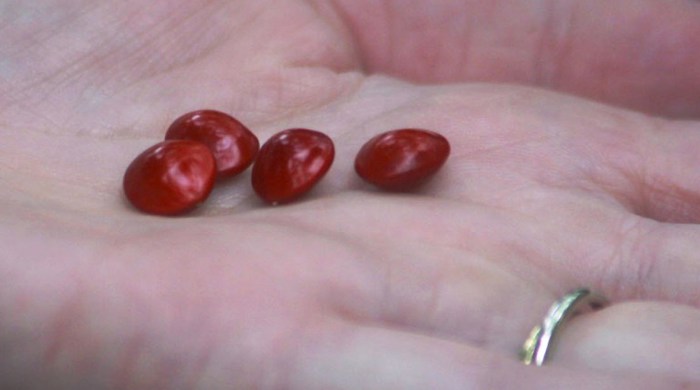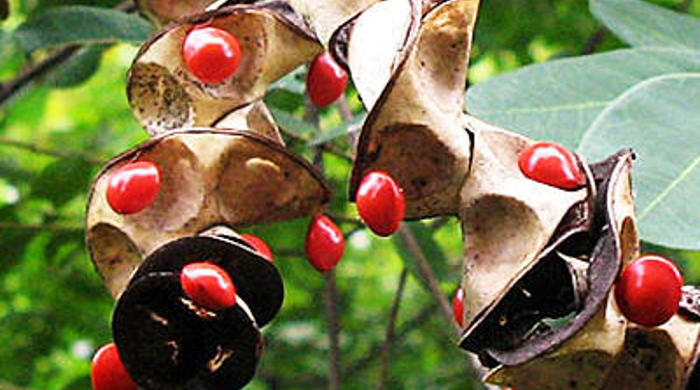Adenanthera pavonina
Bead tree
Also known as:
Saga tree, red sandalwood tree, coral bean tree
Family: Fabaceae
Origin: Asia

Regional Pest Management Plan (RPMP) status
- Not a legally declared pest
General description
Erect, deciduous tree about 15 m tall. Trunk is dark brown/grey and often multi-stemmed. Leaves are large and bi-pinnate, with 6 opposite pairs of pinnae and 21 alternate pinnules.
Flowers are small, creamy-yellow and borne on narrow spike-like racemes. Seed pods are about 22 cm long, narrow, curved and curl when split. Seeds are hard, obovoid and bright red.
What you need to know
Although bead tree is not a legally declared pest plant, it may still be invasive in some situations. Consider lower-risk alternatives for your garden, such as native plants.
Habitats
Forest, coastal areas, riparian margins, disturbed habitats.
Dispersal
Seeds dispersed by birds, water, gravity and soil movement.
Impact on environment
May outcompete native plants. Nitrogen fixer.
Control
Site Management
Follow up treated areas 3 times per year. Encourage natural regeneration of native plants or replant treated areas where possible after 2-3 treatments to establish dense ground cover and minimise reinvasion.
Recommended approaches
Physical control
Method: Dig out.
Plant parts requiring disposal: Seeds.
Disposal options: Remove to greenwaste or landfill if practical.
Biocontrol
Biocontrol is currently not available for this species.
Community agrichemical control recommendations
No qualifications: Cut stump and paste freshly cut base of stems with metsulfuron gel.
Basic Growsafe certified: Cut stump and spray freshly cut base with 1g metsulfuron-methyl per 1 L of water.
Certified Handler/Experienced agrichemical user: Drill and inject trees with 10g metsulfuron-methyl per 1L of water if safe to do so. Drill 18mm holes (tangentially angled downwards) in a spiral up the trunk.
For 50mm stems drill one hole. For 100mm stems drill two holes. For larger stems drill holes 150mm apart. Foliar spray seedlings with 5g metsulfuron-methyl per 10L of water and 20ml penetrant.
Safety notes
Large trees must not be drilled that are closer than 1.5 times the height of the tree from paths, walkways and property.
Trees over 4 metres in height should be removed by a qualified arborist.
Caution: When using any herbicide or pesticide please read the label thoroughly to ensure that all instructions and safety requirements are followed.






